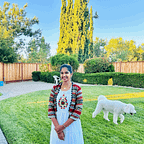Controlling PowerPoint with Hand Gestures Using Python and AI
PowerPoint presentations are ubiquitous in work and education. However, needing to use a mouse, keyboard or remote to control the slides can disrupt the flow of a presentation. The authors of this paper explored using hand gesture recognition with Python and AI to allow more natural control of slides.
They developed a system using computer vision libraries like OpenCV and MediaPipe to detect and classify hand gestures from a webcam feed. Things like pointing with two fingers controls the mouse pointer, while a flat open palm moves to the next slide.
After detecting the hand, different gestures like finger counts and orientations are classified using machine learning models. These mapped gestures then trigger Python code to emulate keyboard presses and mouse movements for controlling PowerPoint.
In testing, the accuracy for detecting and correctly acting on gestures ranged from 80% to 95% for things like mouse clicks, draws, undoing, moving between slides etc. The only dependency is a webcam — no special hardware is required.
The benefits are more natural interaction for the presenter without breaking eye contact to press keys or hold a remote. It could make presentations more engaging and dynamic while the speaker fluidly controls slides with hand waves and cues.
Limitations right now include the detection range from the camera and the need for a reasonably high-end GPU for real-time performance. As computer vision and hardware improves, the reliability and accessibility of systems like this will increase.
The potential is there for gestures combined with voice controls to operate computers in a more natural, conversational way instead of memorizing specific keyboard and mouse sequences. This technology could one day allow us to interface with machines simply by pointing and speaking rather than traditional input devices.
There remain some technical limitations around detection distance from the camera and the computing power required for real-time performance. But we can expect these barriers to diminish over time as hardware and computer vision algorithms continue advancing rapidly. The potential is clearly there for hand gestures augmented with voice controls to enable more intuitive human-machine interfaces driven by natural conversational cues rather than traditional input devices. This work represents early strides in that direction.
